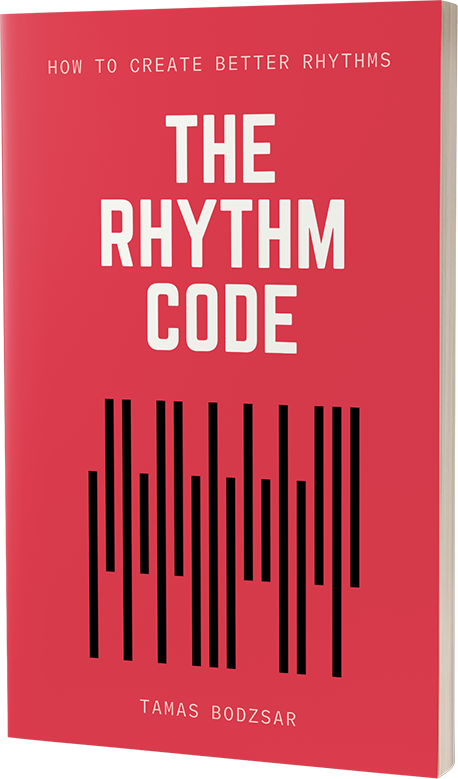What’s the Rhythm Code™?
The Rhythm Code is a hidden system behind many successful songs. It is used by all successful songwriters, even though they are probably not aware of it. The Rhythm Code is used in ALL genres: pop, rock, jazz, EDM, country, funk, R&B.
What do you mean by “hidden”?
The Rhythm Code is a hidden system the same way a musical key is a hidden system. For example, in a song, there are melodies, chords, intervals, and they all give us CLUES that they are in a common system: we call this “a key”. For example “the key of C major”.
A typical song doesn’t necessarily contain all the notes of the C major key, yet we know that it’s in the key of C major. Because we know the theory of the hidden system behind it. The same applies to the rhythm. There is a hidden system for rhythm, which I’ve discovered in 2012 and named it the Rhythm Code. We have had a theory for tonality for a very long time now, but this is the first time we have a similar theory for rhythm.
Why is it important?
The Rhythm Code is the most popular rhythmic system on the planet. It is used by ALL top producers and songwriters (people like Max Martin, Taylor Swift, Ed Sheeran, Adele, Michael Jackson, Stevie Wonder, and so on…), even though they are probably not aware of it.
It’s extremely useful for songwriters and producers because, with the help of the Rhythm Code, we can create better songs, better grooves, better rhythms, better melodies, better drumbeats, better bass lines. It is everywhere in the song arrangements in highly successful songs.
Rhythm is the most overlooked topic in songwriting, yet it’s one of the most essential parts of good music.
The Rhythm Code is the first chapter of the Songwriting Essentials online course.
This is how I found a hack for musical rhythm
In 2010, I got the idea of writing my own songs in the style of Cuban Salsa. (Which is kind of weird, since I’m not Cuban.) The problem was, even though I played many Salsa songs before, I didn’t know anything about how to create those complex rhythms to arrange my own songs.
So I started to transcribe many salsa songs and analyze their rhythm. What the horn section is playing, what the piano, the bass, the drums are playing. Unconsciously, I came up with the idea of creating a visual “map”, kind of like a guide that helped me create salsa arrangements. And it worked!
My first Salsa song became relatively famous amongst salsa dancers around the world. They sent me many videos from 50 countries where they dance to my song. (Take a look at this video with the song.) On top of that, a hotel in Havanna, Cuba used this song in their promotional video. (This was kind of a big deal for me, a Cuban hotel promoting Cuba with my song.) And many people are still surprised when they found out that this song is not from a Cuban band, but from a songwriter from Europe.
It was only later that I realized that this “map” of rhythm is not only in Cuban music. It’s literally everywhere. One of my biggest surprises was when I realized that the song “Happy” by Pharrell Williams is using the Rhythm Code. Since then, I analyzed more than 2000 songs in popular genres. It turns out, the Rhythm Code is everywhere. Do you want to know the biggest secret of Max Martin? It’s not melodic math. It’s the Rhythm Code.
It was an even bigger realization that I’m the first person on the planet who discovered this hidden system in rhythm. I have searched Google for articles, publications, videos, books, courses about songwriting, composing, musical rhythm, but NOBODY talks about this.
Ask Me Anything
Feel free to join the conversation on Reddit about The Rhythm Code.
The secret pattern behind successful songs
Get the eBook for $7

